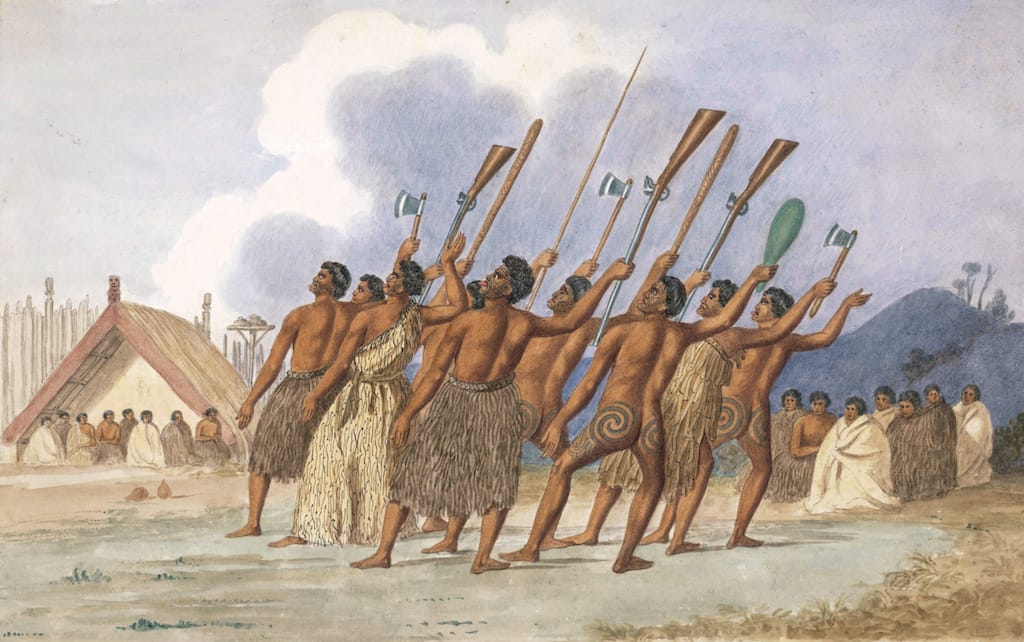The Haka: A Guide to New Zealand’s Traditional Maori Dance
Explore the haka, New Zealand’s iconic Māori dance, celebrated for its powerful movements and rich cultural history. This guide delves into its origins, types, and contemporary role, honoring its deep roots in Māori identity and tradition.

The haka, a powerful and captivating tradition of the Māori people of New Zealand, is more than just a dance. It is a living cultural expression, steeped in history, storytelling, and emotion. The haka holds a central place in Māori identity and has become an internationally recognized symbol of New Zealand’s heritage. This guide explores the haka’s origins, significance, and its role in contemporary culture.
What is the Haka?
The haka is a traditional Māori performance involving synchronized movements, chanting, and dramatic facial expressions. It is performed by groups, emphasizing unity and shared purpose. The haka serves various functions, including:
- Welcoming Guests (Pōwhiri): A way to honor and greet visitors with respect.
- Celebration: Performed at weddings, graduations, or cultural festivals to mark joyous occasions.
- Mourning: Used in funerals to express grief and commemorate the deceased.
- War Dance: Historically performed by warriors to intimidate opponents and prepare for battle.
The haka transcends its warlike origins to become a dynamic form of cultural expression used in both traditional and modern settings.
The Origins of the Haka
The haka’s roots are embedded in Māori mythology and history. One legend attributes its creation to Tāne-rore, the son of Hine-raumati (goddess of summer) and Tama-nui-te-rā (the sun god). The shimmering heat waves seen on a hot day were said to be Tāne-rore’s dance, inspiring the movements of the haka.
In ancient times, haka were performed by warriors before battles. Known as peruperu, these war dances featured aggressive movements, loud chants, and intense expressions designed to intimidate enemies and embolden the performers.
Types of Haka
The haka is not a singular tradition but encompasses various forms, each with specific meanings and uses. Here are some prominent types:
- Peruperu: A traditional war haka involving weapons and leaping movements, intended to prepare warriors mentally and physically for battle.
- Ka Mate: The most famous haka, composed by the Māori chief Te Rauparaha in the early 19th century. "Ka Mate" celebrates survival and triumph and has been popularized by the New Zealand All Blacks rugby team.
- Ngārahu: A haka performed without weapons, often used in ceremonies or cultural events to convey unity and strength.
- Tūtū Ngārahu and Whakatū Waewae: Social haka emphasizing storytelling and celebration, showcasing the vibrancy of Māori culture.
Each type of haka has unique choreography, lyrics, and purposes, reflecting the diversity within Māori traditions.
The Structure of a Haka
The haka’s structure is a blend of movements, rhythm, and vocalization, all performed with precision and emotional intensity. Its key elements include:
- Movements: Stamping feet, slapping thighs and chests, and coordinated hand gestures that amplify the performance’s impact.
- Facial Expressions: Wide eyes, protruding tongues, and fierce looks are used to convey passion and intensity.
- Chanting: The haka is accompanied by a chant, typically in the Māori language, which communicates its message. The words can celebrate ancestors, issue a challenge, or express unity.
These elements create a performance that is both visually and emotionally striking, resonating with performers and audiences alike.
Cultural Significance of the Haka
For the Māori, the haka is a cultural treasure that embodies their heritage, values, and identity. It serves as a medium for storytelling, a means of connecting with ancestors, and a way to assert pride in their traditions.
The haka also plays a vital role in community bonding. It brings people together, allowing them to express collective emotions—whether joy, sorrow, or defiance. For Māori communities, performing the haka is a way of preserving their language, customs, and stories.
The Haka in Contemporary New Zealand
While rooted in ancient traditions, the haka has evolved to hold a prominent place in modern New Zealand culture. It is performed at various occasions, including:
- Sports Events: The New Zealand All Blacks rugby team performs the haka before international matches, showcasing Māori culture to a global audience. Their renditions of "Ka Mate" and other haka have become iconic.
- State Ceremonies: Haka are performed at official events, such as state welcomes for foreign dignitaries, to honor guests and demonstrate New Zealand’s cultural heritage.
- Education: Schools in New Zealand often teach the haka as part of cultural education, helping students connect with Māori traditions.
- Entertainment and Advocacy: The haka has appeared in films, concerts, and social movements, bringing attention to important causes while celebrating Māori identity.
Conclusion
The haka is a remarkable expression of Māori culture, blending movement, rhythm, and storytelling into a performance that transcends time and place. Its enduring significance lies in its ability to convey powerful emotions, unite communities, and honor a rich cultural heritage.
Whether performed in a traditional ceremony or on a global stage, the haka remains a testament to the strength and resilience of the Māori people. By learning about and respecting this tradition, we can all gain a deeper appreciation for one of New Zealand’s most treasured cultural practices.





